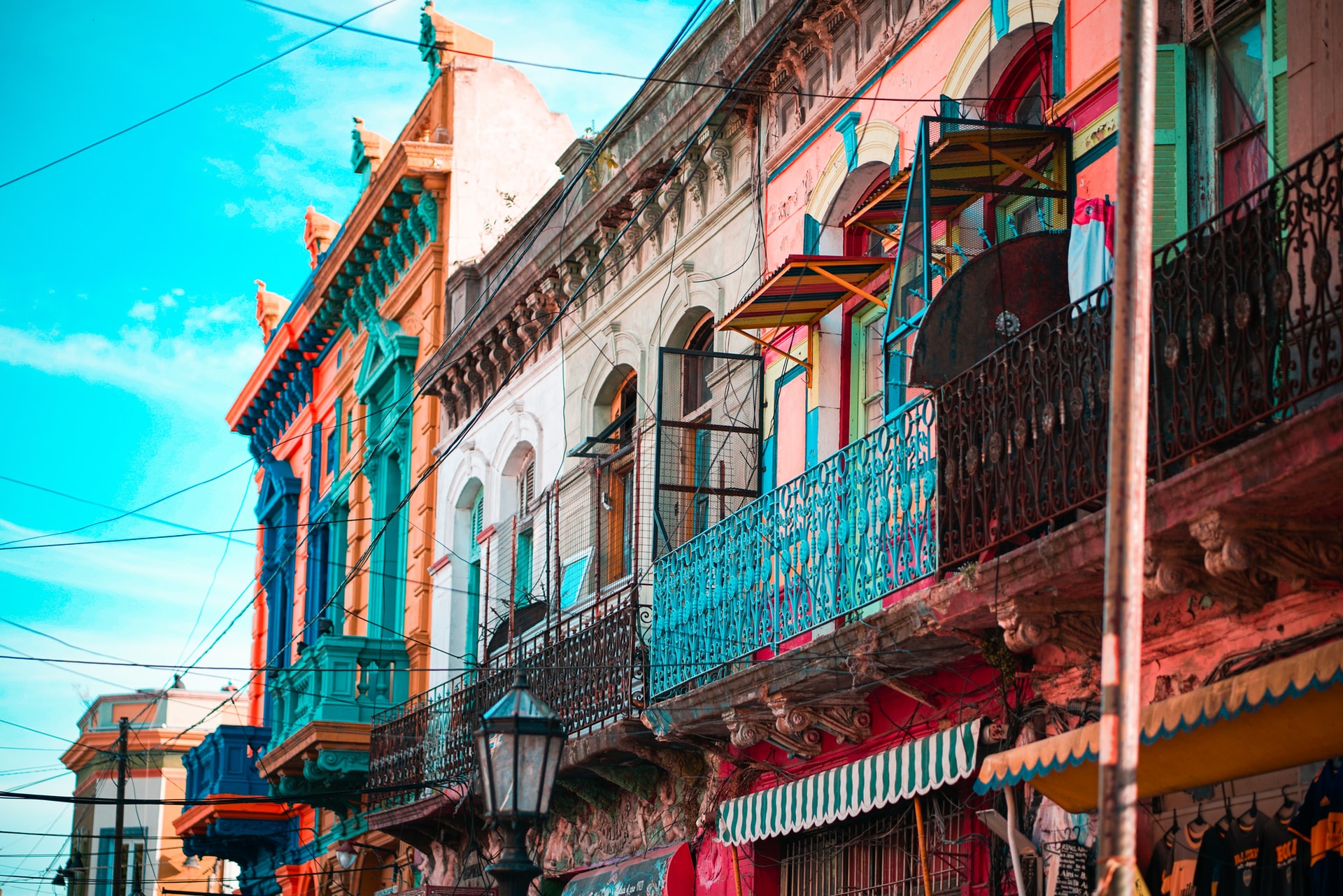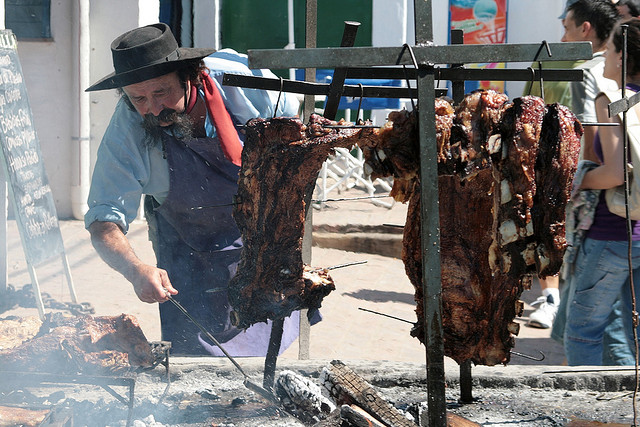Visiting Argentina can be a once-in-a-lifetime experience — there are few countries quite so large and diverse as Argentina. Here’s our travel guide to visiting this big and beautiful South American country.
Argentina is an immense, intoxicating and invigorating country. It’s hard not to fall in love when visiting this diverse and passionate land. The sexy beat of late nights in Buenos Aires, the hedonistic rush of the Iguazú Falls or the slow and steady rumbling of the Perito Moreno glacier in Patagonia, Argentina is sure to seduce you, one way or another.
Travel guide to visiting Argentina and discovering its wine in situ
A cosmopolitan capital in many ways, Buenos Aires is the most important city in terms of domestic wine consumption and volume but, more interestingly, also in the range of wines available. An increasingly sophisticated and discerning wine scene is demanding the most interesting releases from around the country, making Buenos Aires a great place to do a few tastings before heading to the wine regions.
Where to wine & dine in Buenos Aires

The country’s top restaurants are mainly all located here, and on the top of my list for their food and wine are classic steak house Don Julio (Guatemala 4699); modern Argentine fusion at Aramburu (Vicente López 1661); and exotic Argentine meats at El Baqueano (Chile 499). Wine bars worth giving a spin include Vico (Gurruchaga 1149); Pain et Vin (Gorriti 5132); Naranjo Bar (Angel Justiniano Carranza 1059); and Vini Bar (Jorge Luis Borges 1965). Anchoita Anchoita (Juan Ramírez de Velasco 1520) in Chacarita is another newcomer with excellent food and wine.
Food in Argentina
Argentina is known for its steak, and with good reason — they eat more steak than most other countries in the world! It’s almost always on the menu, no matter how far off the beaten track you are. Argentines love beef and I’ve met many people who simply don’t consider it a proper meal unless beef is included in it somewhere.
If you aren’t into beef, good luck! Joking aside, Argentina is getting better at catering for non-meat eaters. When I first arrived just a decade ago, the ‘vegetarian option’ was often a ham and cheese sandwich or chicken! Part of this confusion comes from the fact that the word meat, carne, translates into beef too. Chicken is widely available but pork, lamb, rabbit and goat are considered regional specialities. You’ll find some fish caught locally from the rivers in the far east or off the coast, but most of the fish elsewhere in Argentina is imported and less common. If you are in Patagonia, don’t miss local centolla (king crab).
Argentine staples include the asado (Argentine BBQ) with all the frills — black pudding, sweetbreads, offal and balls included; empanadas usually stuffed with minced meat, corn or cheese; and milanesa — a breaded escalope of beef or chicken that usually comes topped ‘a la napolitana’ with tomato sauce, ham and cheese.
For a sweettooth, don’t miss Argentine dulce de leche which arrives in every form with calorific desserts and sweet treats lining the tables, especially when mate is about to be served.
Read our guide to Argentine cuisine.
 Language
Language
Spanish is the official language in Argentina. However, if you are arriving with a knowledge of Castellaño from Spain you might feel a little perplexed when locals start speaking lunfardo — the 19th century slang that emerged from the backstreets of Buenos Aires. It’s worth having a go yourself (and you can learn some Argentine slang here!)
Many hotels and restaurants have staff who speak English, and Portuguese is increasingly spoken too.
Money talk & tipping
Where do you start… getting your head around money in Argentina is quite a feat! Firstly, the going rate of inflation is about 30% a year — so be prepared for the price of things to change before you arrive, or even mid-trip! Hotels will often quote in US dollars in order to avoid this constant price change, and you can pay in the local currency (the Argentine peso) on arrival based on that day’s official exchange rate.
There is also an unofficial exchange rate, called the dolar blue (blue dollar), which is often 50% higher than the official exchange rate. Whichever rate you are changing at, do try to bring cash with you because there are hefty fees for withdrawing cash at an ATM (and they inevitably use the worst of all the exchange rates). Cards are accepted at most hotels, restaurants and supermarkets.
Tipping is normally just a case of rounding up, but 10% is appreciated if the service is good.
Safety & travel
Distances are long in Argentina… especially if you are heading to remote beauty spots like Patagonia or Iguazú! Long-distance buses are the cheapest and sometimes the most time-effective option, as most flights will pass through Buenos Aires (there are few direct flights between other cities) with long layovers and sometimes a change of airport.
Buenos Aires has two airports: the main international airport, Ezeiza (Ministro Pistarini), which is over an hour from the city centre, and Aeroparque (Jorge Newbery), mainly for domestic or short-haul international arrivals, which is 20 minutes from the city centre respectively.
Argentina is quite a safe country to travel in as a tourist, although you should avoid the most impoverished neighbourhoods in every city (especially Buenos Aires), where it is less safe — especially at night. Pickpockets are common, so just keep your wits about you and don’t bring anything too precious on your travels.
Health & visas
Argentina is one of the few countries in Latin America with a free healthcare system, which means it is woefully overstretched with ‘health tourists’ from neighbouring countries. If you do have travel insurance, you’ll find the private health clinics and hospitals much faster and more efficient.
Most nationalities don’t need to apply for a visa before arriving in Argentina; you’ll be given a 90-day tourist visa on arrival.
Read our guide to travelling to Argentina during the Covid 19 pandemic.
Experiencing Argentine wine at home
Fortunately Argentina’s wines are widely available around the world and most major importers help bring Argentine wine to restaurant tables, wine bars and shops. Here are some of my favourite specialist importers to check out:
UK: lasbodegas.co.uk; indigowine.com; condorwines.com; ruta40.com; hispamerchants.com; gourvid.com; tasteargentina.co.uk
USA: brazoswine.com; vineconnections.com; grazianoimport.com; vinodelsol.com; taubfamilyselections.com; elixirwinegroup.com; copafina.com
Brazil: lacharbonnade.com.br
Europe: casavinosargentinos.ch; southworldwines.com
Australasia: jedwines.com
Want to know more about Argentina
and its wine regions?
Get your copy of the ARGENTINA WINE GUIDE E-BOOK!
Read more of our travel and destination guides to Argentina:
- Destination guide to Cafayate and the Calchaqui Valleys
- Destination guide to Lujan’s wineries
- Visiting Rio Negro and its wineries


